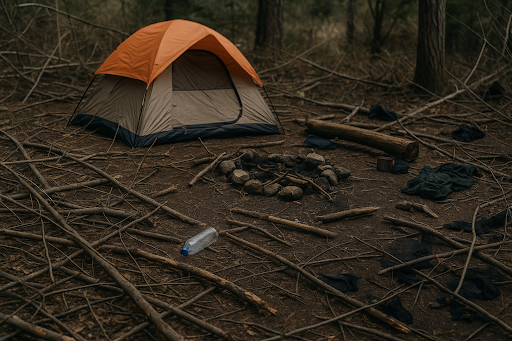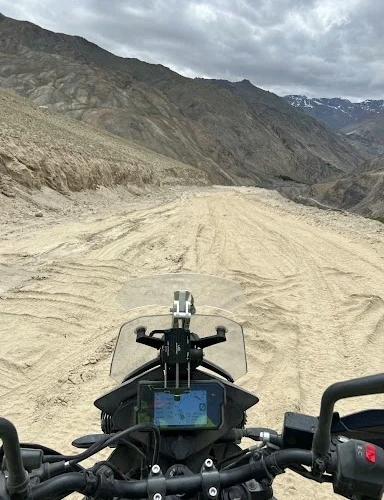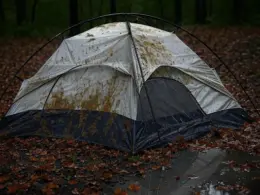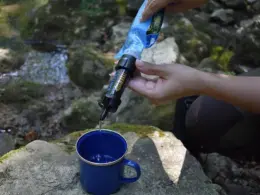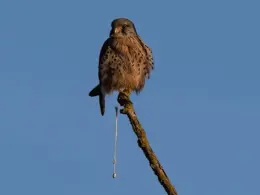I’ve always believed that camping is more than just a getaway-it’s a chance to connect with nature on a deeper level. That connection is in large part due to realizing that we truly are stewards of the land and should take care of it.
But over the years, I’ve realized that simply “leaving no trace” isn’t always enough. Sometimes, we can do more. We can leave the wilderness better than we found it. And in that realization is where the term “rewilding” comes in.
Rewilding is about actively restoring and improving the natural environment around us, even in small ways. For campers like us, this means taking simple actions that help the ecosystem thrive long after we’ve packed up and gone home.
In this article, I’ll share five practical ways you can make rewilding your campsite a habit, leaving it better than when you arrived. These steps are easy to implement, require little to no extra gear, and won’t detract from your camping experience.
Table of Contents
1. Removing Invasive Species
Invasive species are plants or animals that don’t belong in a particular area and can wreak havoc on the local ecosystem. They outcompete native species, disrupt food chains, and degrade habitats. As campers, we’re in a unique position to spot and remove these invaders before they spread further. Since most of us aren’t in pest control, focusing on removing invasive plants is a great way to start.
How to Do It
- Identify Them: Before your trip, check local park websites or use an app like iNaturalist to learn about common invasives in the area. Japanese knotweed, garlic mustard, and Scotch broom are common invasive species in North America.
- Pull Small Plants: Wear gloves and pull them out by the roots. It’s satisfying work-make sure to get the whole plant so it doesn’t grow back. Yes, including the roots.
- Cut Larger Ones: For vines or woody plants, use a pocket knife or clippers to cut them at the base. Bag up the cuttings if they’re seeding to prevent spread.
- Dispose Properly: Pack out what you remove or scatter it away from trails and water.
The most important thing is to make sure you’ve identified the plant correctly. There’s no sense in ripping out native plants as it is just as destructive. Check with rangers or signage-some parks have specific rules about plant removal.
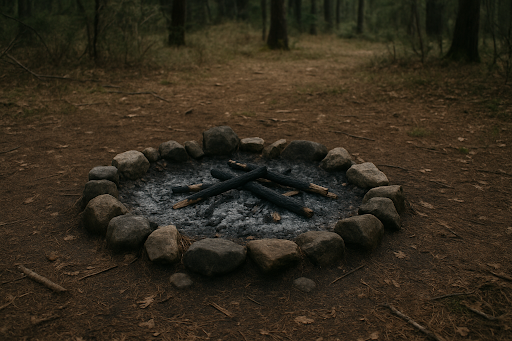
2. Don’t Disturb Wildlife Habitats
Rocks, logs, and dead trees aren’t just part of the landscape-they’re homes for wildlife. Disturbing them can displace creatures and upset the natural balance. As campers, we can help by leaving these features untouched and respecting the critters that depend on them.
Every rock, log, or dead tree is a lifeline for local wildlife. Lizards hide under stones, beetles burrow in fallen branches, and birds nest in standing snags. Moving a rock might expose a reptile to predators while cutting a dead tree could destroy a bird’s home. These small acts have big ripple effects-fewer insects mean less food for birds for example.
Steps You Can Take
- Leave Rocks Alone: Resist flipping stones unless it’s critical. They shield lizards, beetles, and other small creatures. If you must lift one, set it back gently.
- Don’t Move Logs: Fallen logs house insects and amphibians. Let them rot naturally-they’re part of the ecosystem’s cycle.
- Avoid Cutting Dead Trees with Visible Nests: Standing dead trees can be nesting spots for birds and bats. Chopping one down might leave a family homeless.
You don’t need to be a biologist to make a difference-just be mindful. An easy way to think about things could be “Well, how would I feel if someone did this to my home” and you should get an answer pretty quickly.
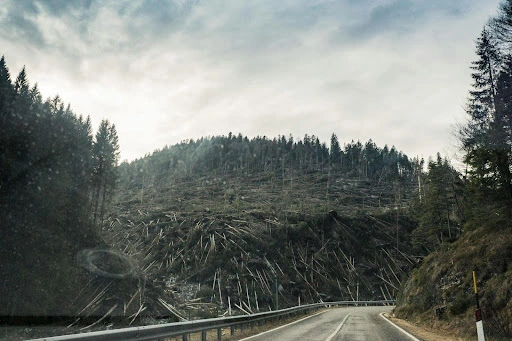
3. Reduce Erosion: Stabilize the Soil
Erosion is a silent thief, washing away soil and destabilizing the land over time. Campsites often suffer from heavy foot traffic which makes it easy for things like runoff to start eating away at the land. Erosion strips away topsoil, making it tough for plants to grow and exposing tree roots. I’ve seen campsites turn into muddy trenches after a rain-preventing that keeps the site usable for years.
What Can You Do?
- Use Natural Barriers: Place small logs or rocks along paths or slopes where water flows. They act like speed bumps for runoff.
- Mulch Bare Spots: Spread fallen leaves or pine needles over worn areas to shield soil from rain.
- Redirect Traffic: If you see a worn patch, step around it to give the ground a break.
Keep in mind that you will be limited in what you can do here, but every little bit counts. On a hilly site last spring, I lined a trampled path with stones I found nearby. It held up through a downpour, and the soil stayed put. This way folks could still use the trail if need be.
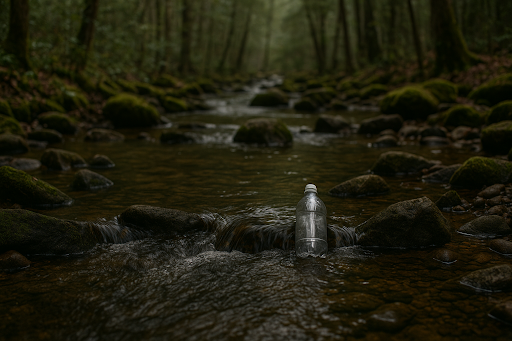
4. Clean Water Sources
Clean water is life-for us and the critters we share the wild with. Streams or ponds near campsites can collect trash or debris, but a quick cleanup can keep them thriving. Wildlife depends on these sources to live and we also use them for recreational purposes, like fishing. A clogged stream can disrupt fish spawning, causing a disruption in the birthing cycle, and impacting fish populations.
How to Do It
- Pick Up Debris: Use gloves to grab trash, sticks, or leaves from the water’s edge.
- Avoid Contaminants: Keep soap, food scraps, and gear away from the water-even biodegradable stuff can harm.
- Be Gentle: If you’re clearing muck, go slow to avoid stirring up sediment that clogs fish gills.
It’s as easy as reaching in and grabbing a plastic bottle or not going to the washroom near shore. These kinds of actions will make a difference, if not for you, then the next visitor.
5. Watch Where You Have a Fire
Campfires are a camping classic, but they can scar the land if we’re not careful. Smart fire habits keep the soil-and the site-healthy. Big fires or scattered ash can sterilize soil, killing microbes and stunting regrowth. While controlled burns are necessary to help ecosystems thrive, I have seen old fire spots where nothing grows and it’s just a reminder to keep your fire contained.
How to Do It
- Stick to Fire Rings: Use existing ones to focus the damage in one spot.
- Keep It Small: A modest fire uses less wood and leaves less mess.
- Clean Up the Ash: Once cool, scatter ash thinly over a wide area.
- Try Alternatives: Portable stoves or fire pans lift flames off the ground.
Less soil damage means faster recovery. It’s a simple way to ensure the site stays welcoming for the next group instead of becoming a barren piece of land.
Final Thoughts
Rewilding your campsite doesn’t take much-just a little time and care. Removing invasive species, creating habitats, reducing erosion, cleaning water sources, and minimizing fire impact are small steps that leave a lasting mark. I’ve done these on countless trips, and every time, I pack out knowing I’ve given something back.

